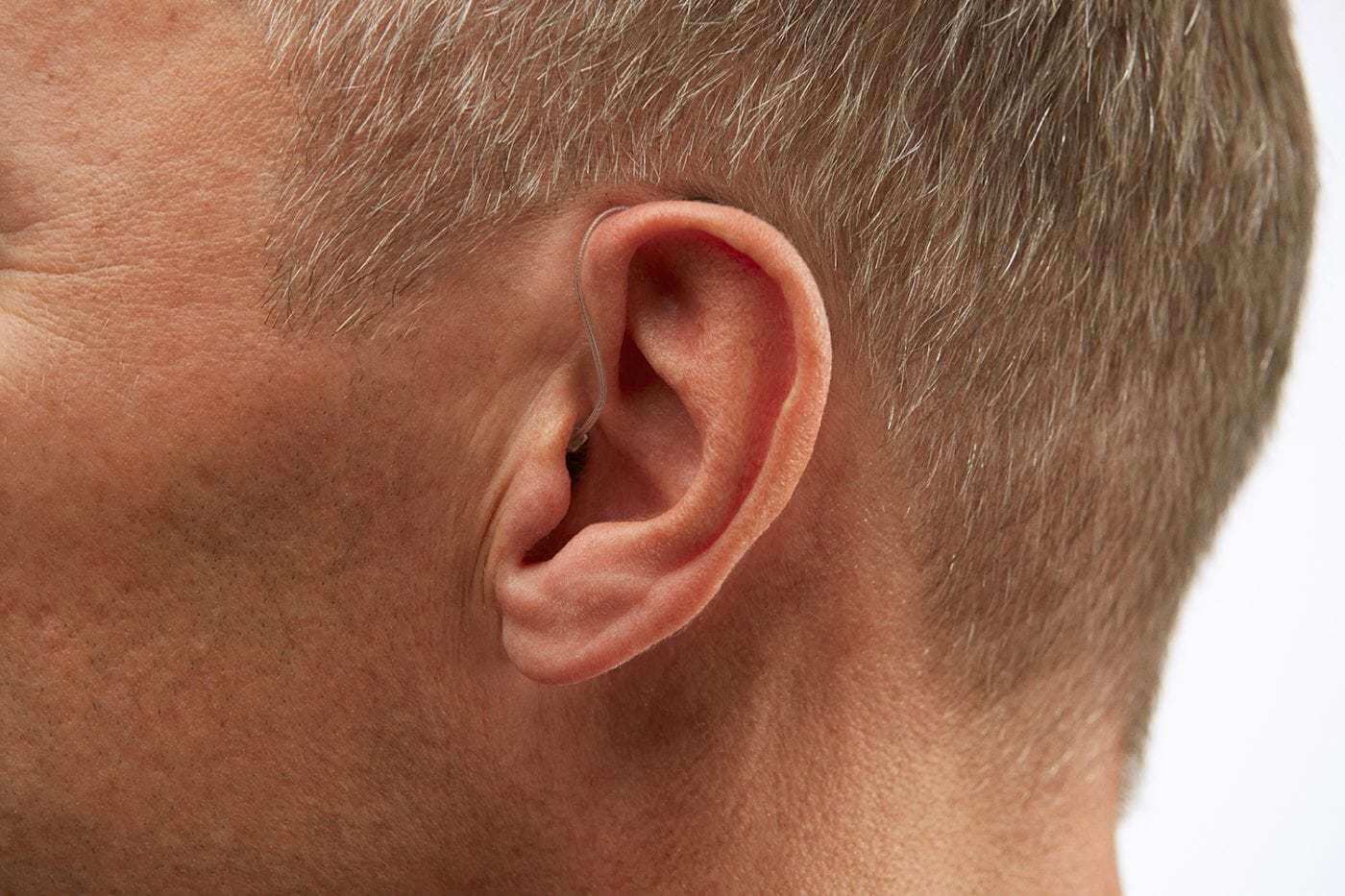To amplify sound, hearing aids typically use a microphone, amplifier circuitry, and a tiny loudspeaker. Although most types of hearing aids share similar components, they have differing designs, technologies, features, and costs.
Digital vs. Analog
Analog hearing aids, which make continuous sound waves louder, are slowly going extinct. Although some analog hearing aids are programmable, making hearing easier in a variety of environments, they simply can’t compete with digital.
Most hearing aids these days are digital because the amazing technology allows tiny devices to provide more natural sound. They contain computer chips (to analyze speech and environmental sounds), dual microphones (beneficial in noisy situations), open technology (to keep the ear canal unobstructed), and feedback cancellation.
Plus, digital hearing aids can automatically adjust to your environment, and they can be programmed to meet your personalized needs. Many utilize Bluetooth technology, so you can listen to your cell phone, TV, and home phone directly through the aid. And with ReSound LiNX2 and Oticon Opn, you can sync your iPhone to your hearing instrument for greater control. When exploring digital hearing aids, also keep an eye out for Widex, another reliable manufacturer of superior hearing aids.
Daily Wear
If you want to wear your hearing aid during the day and remove it at night (or as otherwise needed), explore daily wear hearing aids. These convenient devices come in three different styles: behind-the-ear (BTE), in-the-ear (ITE), and in-the-canal (ITC).
Behind-the-Ear (BTE) Hearing Aids
Behind-the-ear hearing aids consist of a hard plastic case (worn behind the ear) and a plastic ear mold (which fits inside the outer ear). The sound begins in the case, and then it travels from the ear mold to the ear. The device suits people of all ages and levels of hearing loss. In fact, it is an excellent choice for young children, because it can accommodate a variety of earmolds and can easily be cleaned and removed. Plus, an innovative form of this device called an open-fit hearing aid fits completely behind the ear, relying only on a narrow tube or speaker wire to reach the ear canal. These tiny BTE devices reduce the hearing aids’ conspicuity and increase comfort.
In-the-Ear (ITE) Hearing Aids
In-the-ear hearing aids rest (you guessed it!) inside the ear. Like BTE aids, these devices have a hard case that holds the electronic components. Some forms of inside-the-ear hearing aids also include special features, like telecoils. These tiny magnetic coils allow the user to receive sound through the hearing aid’s circuity as opposed to its microphone, which makes listening on the telephone and in some public places (those with induction loop systems installed) easier. Although ITE hearing aids can be used by those with mild to severe hearing loss, they are not recommended for growing children.
In-the-Canal (ITC) Hearing Aids
In-the-canal hearing aids either rest in the canal (ITC) of the ear or completely in the canal (CIC) of the ear. ITC devices are customized to fit the users’ ear canal size and shape, while CIC devices are hidden (and sometimes nearly invisible). Although both types of canal hearing aids are minuscule and inconspicuous, they only suit users with mild to moderately-severe hearing loss. They don’t contain many special features, and they are susceptible to earwax clogging. In addition, due to their small size, they can be difficult to adjust, remove, and otherwise handle.
Extended Wear
If you never want to remove your hearing aid, consider purchasing an extended wear device, which will be kept in the ear 24/7. For example, Lyric offers a 100% invisible hearing aid that provides clear and exceptionally natural sound throughout the day and night. A professional will place the hearing aid in your ear canal, where it will funnel sound directly to the eardrum. Its innovative design and deep placement result in reduced background noise and excellent sound quality. Plus, once the device is in place, you may even forget that you’re wearing it! Daily maintenance and frequent battery replacements are unnecessary.
Types of Hearing Aids – Getting Started
To select the best option from amongst these many different types of hearing aids, consider the severity of your hearing loss, how concealed you would like the hearing aid to be, and additional features that appeal to you.
If you are experiencing hearing loss and you live in or around Denver, Colorado, please contact Sound Relief Hearing Center. We provide thorough hearing tests, hearing aids, hearing protection, and more. To learn more about us, please browse our website or give us a call at 720-344-7600. You can also schedule an appointment online to meet with one of our audiologists. We look forward to hearing from you!
At Sound Relief Tinnitus & Hearing Center, we provide hope and help to those living with tinnitus and other hearing health issues. Our patients are at the center of everything we do, and we strive to guide them to overcome their challenges by delivering innovative and compassionate healthcare.
Dr. Julie Prutsman, owner of this family-owned practice, has expanded to 9 locations across Colorado and Arizona. In 2012, she founded Sound Relief in her hometown of Highlands Ranch, Colorado and continues to foster their mission through mentorship of the brightest minds in the field of Audiology.

